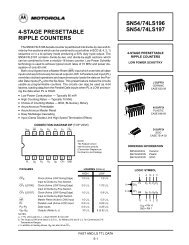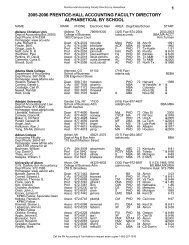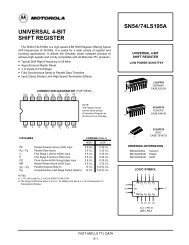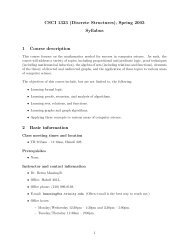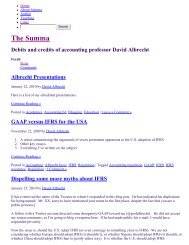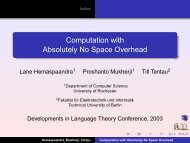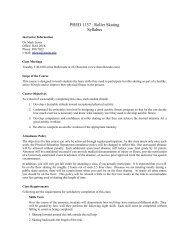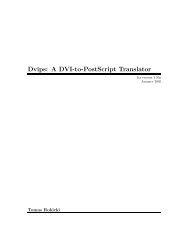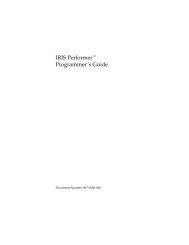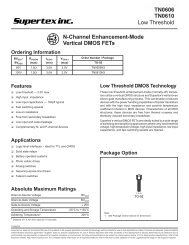A formal description of SYSTEM/360
A formal description of SYSTEM/360
A formal description of SYSTEM/360
- No tags were found...
You also want an ePaper? Increase the reach of your titles
YUMPU automatically turns print PDFs into web optimized ePapers that Google loves.
and Si = 1 is used to denote a pending order to stop, set on line145 or 148 by a previously issued IIIO, to be honored (line 2) thenext time the device requests service. If "'/So and 08/Bo do notagree, it is still possible for a termination status condition to becleared, but only by going to the interface and selecting thedevice. This situation is treated on line 93, which is reached by amultiplexor channel if the sequence to line 89 is followed and thecase is not HIO. For both SIO and TIO at line 93, a multiplexor willproceed to line 94 if the subchannel is both not working and notholding an interruption. For TIO the additional possibility <strong>of</strong>clearing an interruption is signalled by the same criteria as inline 88, except that 08/So must now match the address previouslystored in the address field <strong>of</strong> c" in line 77.If there is an HIO at line 89 and the subchannel has an interruptionpending (line go), no action is taken in either type <strong>of</strong>channel, and the branch to line 161 sets the condition code. Ifno interruption is pending, the possibility <strong>of</strong> command chaining(in a multiplexor channel) is cancelled (line 91) and a branch tothe interface selection sequence (line 115) occurs. Ultimately, anorder to stop will be issued on the interface (line 151) or, for amultiplexor, the subchannel will be set (line 145) to stop theoperation the next time the device requests service.Lines 94-100 cancel interruption conditions arising from nonterminationstatus, as discussed in regard to termination. Aselector channel must order the device to stack the informationat this point (line 96), but a multiplexor channel does not, sinceit accepted non-termination status only provisionally in the firstinstance (line 55). Line 100 indicates that under some (indeterminate)circumstances, a multiplexor channel may not cancel anon-termination interruption condition.At line 101, SIO and TIO are the only possible cases. TIO causesa branch to line 115, but SIO proceeds through lines 102 and 103,to join command chaining at line 104. A channel address word isfetched in line 102 from a fixed location in main storage. It ischecked for protection key and format (line 103) and any nonconformityis recorded as a program check (Si) in the channelstatus byte. In line 104, the local variable j, set to zero for commandchaining (Bi = l), will be used as in data chaining toprevent two successive tic's. Setting j to 1 for SIO, (when Bg = 0),precludes the possibility <strong>of</strong> a tic as the first or only command<strong>of</strong> a sequence. The pci bit is set, if necessary, on line 114.Lines 105-1 14 correspond closely to the data chaining segment,lines 23-31. The differences are largely in error indications, includingan added aspect <strong>of</strong> the format check (compare lines 26and log), but the most significant difference occurs in line 113(as compared to line 27) where k now respeczes all <strong>of</strong> c" includingthe command code portion.All program checks, including a faulty CAW", cause a branchto line 112, which is entered only if there is a program check.From there, command chaining will cause a branch to line 115,FORMAL DESCRIPTION OF <strong>SYSTEM</strong>/<strong>360</strong>start 1/0(lines 102-114)Channel Statetype Bg Bi Sg Simpx ? 0 0 0sel 0 0 0 0commandchaining(lines 104-114)Channel Statetype Bg Bg Sg Sgboth ? 1 0 1231




